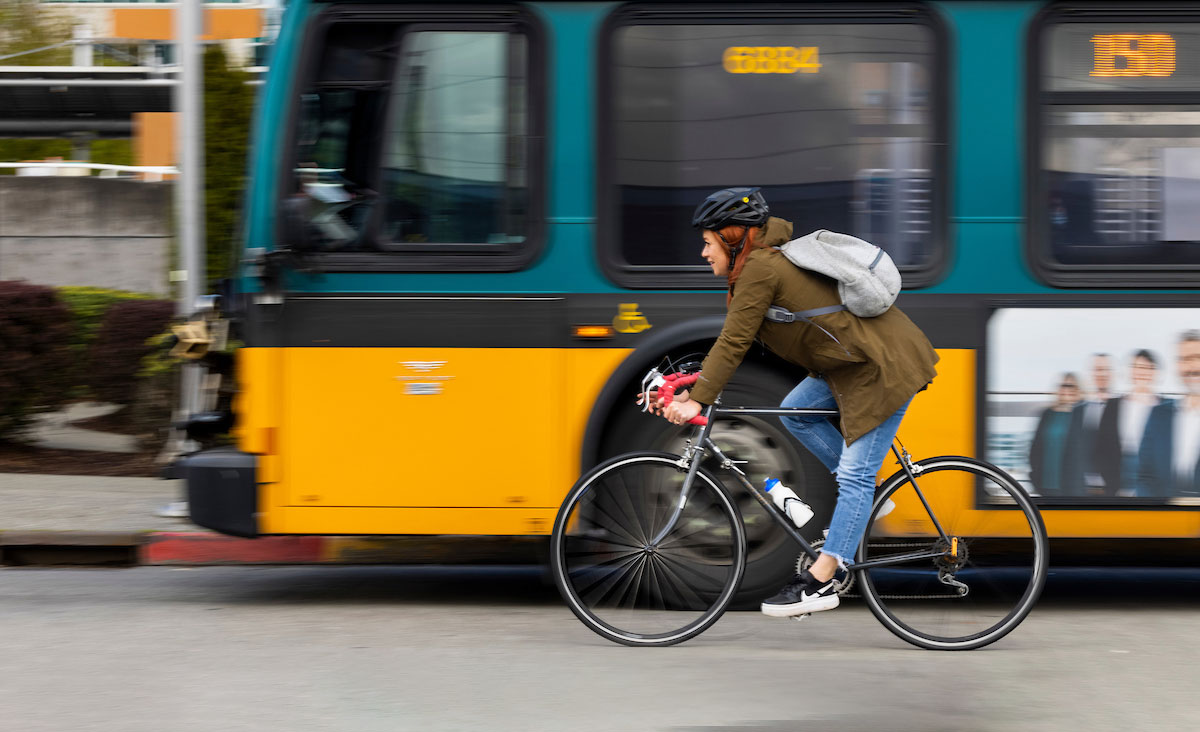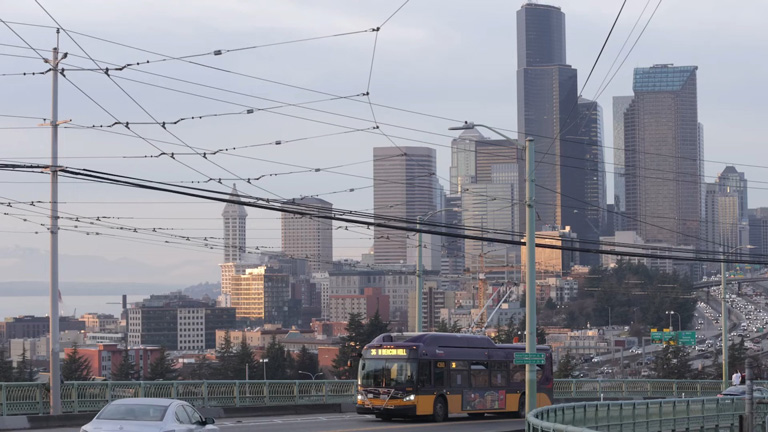Safety tips when riding Metro
- Never run after a bus, or alongside a bus. They may not be able to see you, and you could be putting yourself and others at serious risk by distracting the driver.
- Look up for safety. Be aware of what’s going on around you, especially when you are crossing the street. Make sure drivers see you. Electronic devices can make you a greater target for theft or assault, so be watchful.
- Do not cross in front of a Metro bus at a bus stop. Wait until the bus leaves the stop, and then cross carefully.
- Please allow passengers to exit the bus before you board.
- If you are standing in the bus, hang onto the handrails provided in the event the bus makes a quick stop.
- On crowded buses, please move to the back of the bus to make room for others.
- Stand behind the yellow line on the floor next to the driver's station. This helps give drivers as much visibility as possible.
- Stay clear of the doors.
- Avoid standing in the stairwells.
- Keep the aisles clear.
- Keep your head, arms and all objects inside bus windows.
- Signal the bus driver at least one block before your stop so they have sufficient time to stop smoothly.
- Hold onto the railing when exiting the bus. Bus steps and sidewalks can become slippery from rain.
- As you leave the bus, watch for cars.
Anti-harassment
It's OK to say, "That's not OK!" All harassment – physical, verbal, intimidation – is wrong.
Code of conduct
To help ensure the safety and security of all those who use our services.
- All Metro buses are equipped with lifts or ramps at the front door.
- Each bus stop is clearly identified as to its accessibility.
- Alert the driver to deploy the lift or ramp. Once on board, wheelchairs are secured by the driver.
- Wheelchair and scooter users have designated areas reserved at the front of the bus.
- Metro's Customer Information Office can help you determine the level of accessibility at a specific stop.
- Metro's Online Trip Planner lets you plan trips requiring accessible stops.

- Be predictable: Cyclists should try to stay in a consistent position visible to drivers. If you can't see the bus mirrors, then the bus driver can't see you.
- Passing: Pass a bus only on the left. Bus drivers are trained to share the road with bicyclists and other traffic, but they're paying attention to many things at once.
- Intersections: Never position yourself to the right of a bus at an intersection. Sometimes it may look as though a bus is going straight when it's setting up for a right turn.

 Translate
Translate

